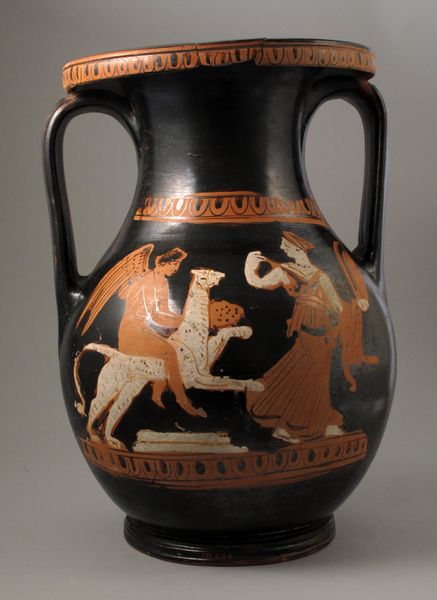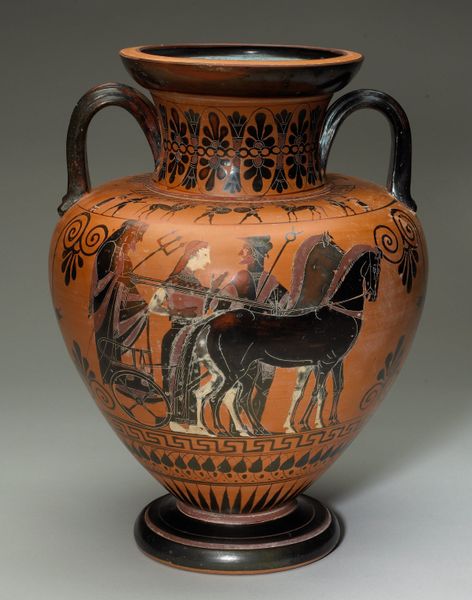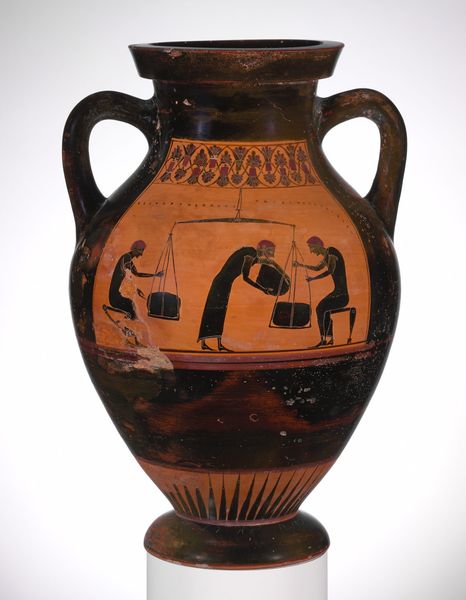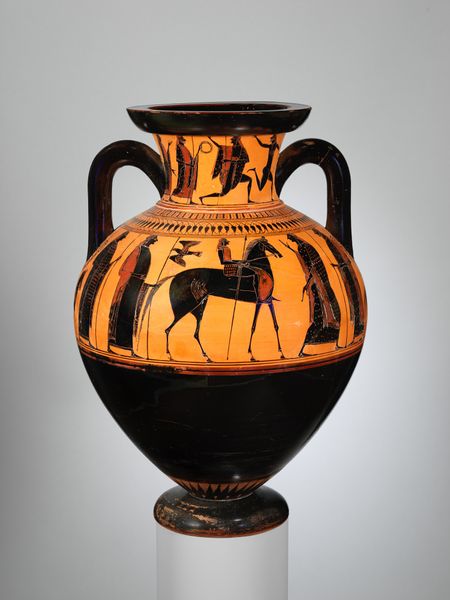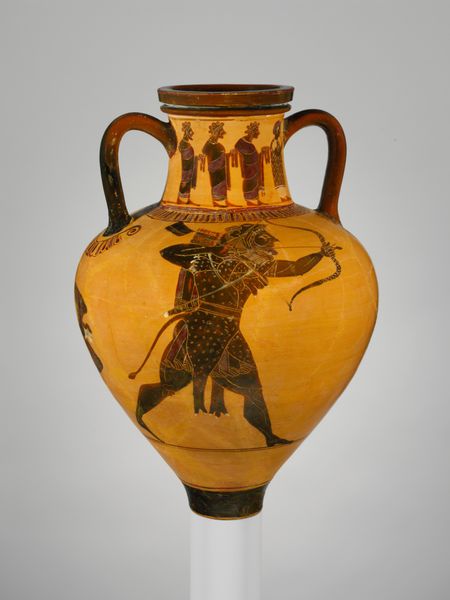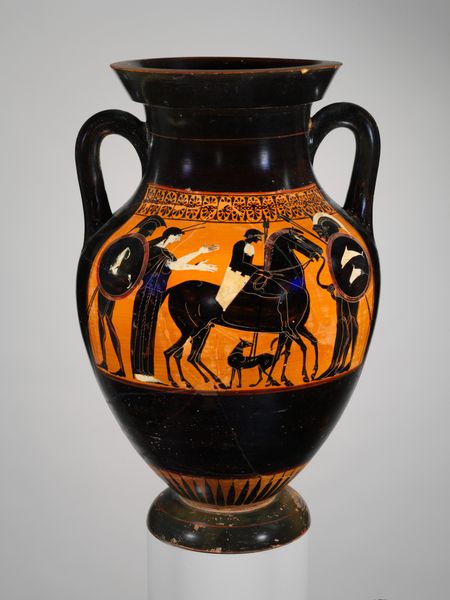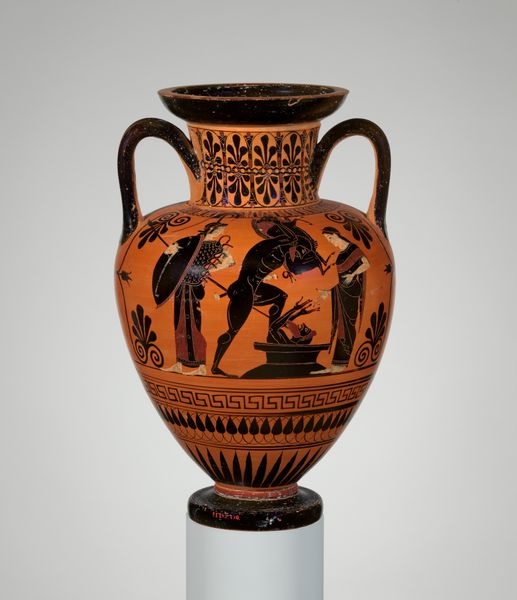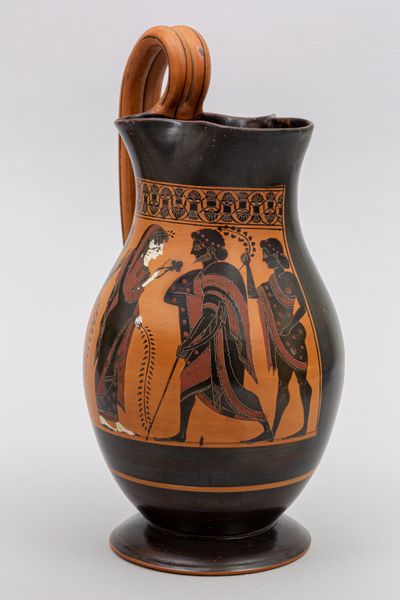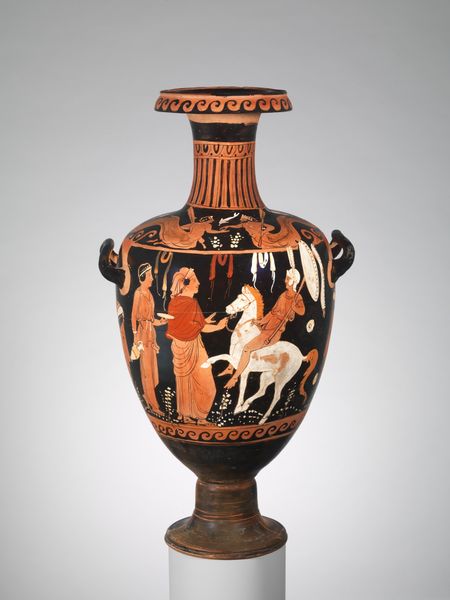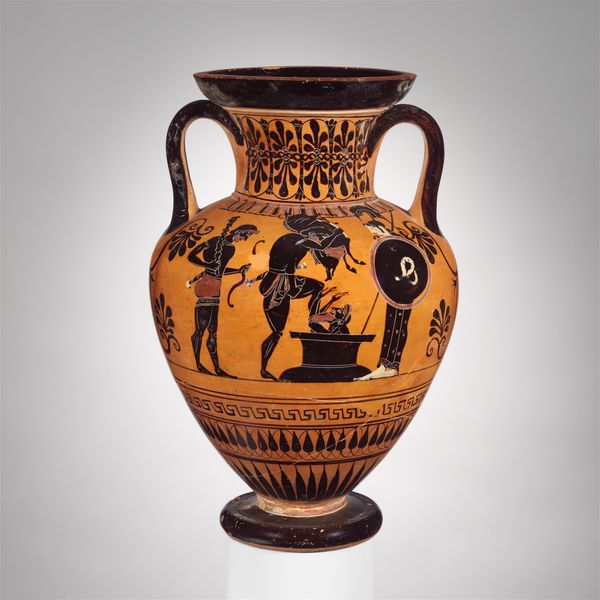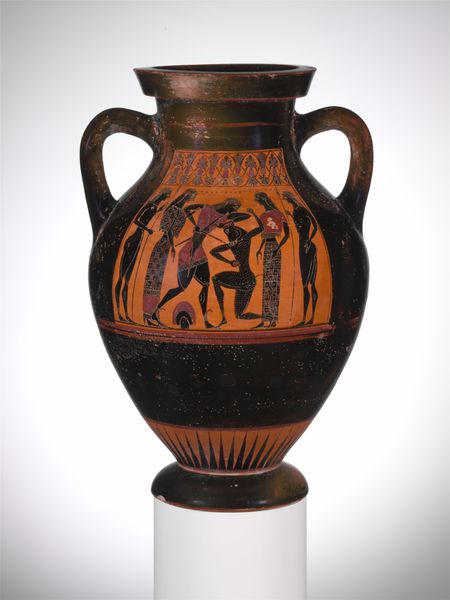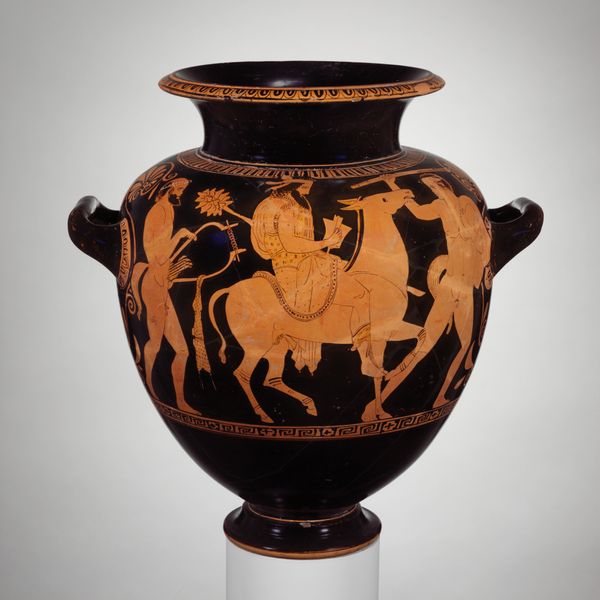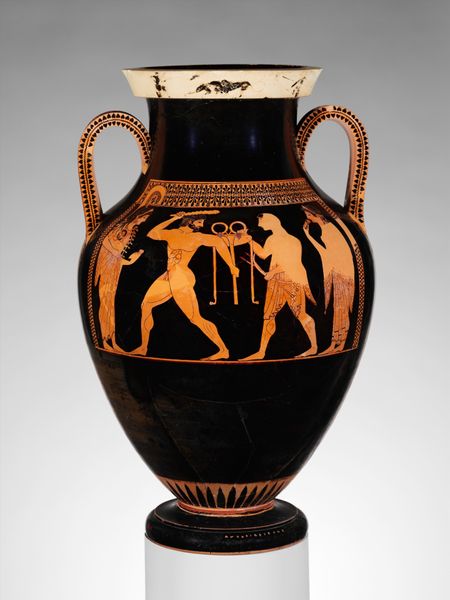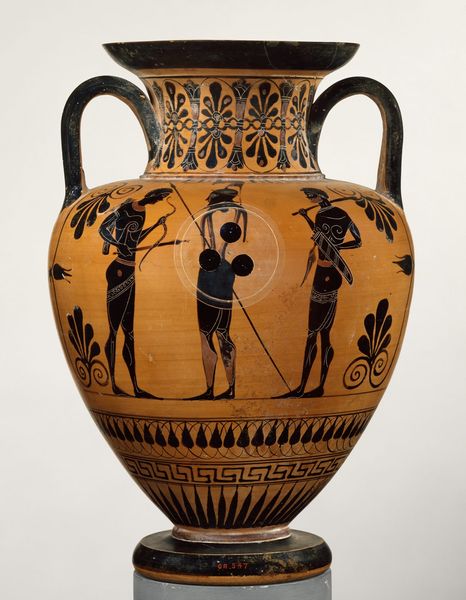
drawing, ceramic, earthenware
#
drawing
#
narrative-art
#
greek-and-roman-art
#
ceramic
#
figuration
#
earthenware
#
ancient-mediterranean
#
ceramic
#
earthenware
Dimensions: H. 14 11/16 in. (37.3 cm) diameter of mouth 6 9/16 in. (16.6 cm)
Copyright: Public Domain
Editor: So this is a terracotta neck-amphora, a jar, from around 540 BC. It's attributed to the Polyphemos Group and currently resides at the Met. It strikes me as very dynamic. What narrative do you think this piece is telling? Curator: It's fascinating how the constraints of the medium—the curve of the jar, the limited color palette—shaped the stories they could tell. What if we consider how this vase, beyond depicting a myth, participates in a dialogue about power? Who gets to be centered in the narrative, and who is relegated to the periphery? Are these monsters really so monstrous, or are they simply the "other" against which the "hero" defines himself? Editor: That's a compelling way to look at it. It's almost as if the figures, both human and animalistic, are caught in this endless power struggle. But how would this relate to the culture of its time? Curator: This piece coincides with the rise of the polis, the Greek city-state. Exploring these images provides some important context. In Athens, citizenship and social hierarchy were hardening. Visual culture played a role. Are these myths meant to reinforce boundaries between 'us' and 'them', Greek and barbarian, civilized and uncivilized? Also, think about the stories that aren't being told here – the experiences of women, enslaved people, and foreigners within those societies. Editor: So you're suggesting that by examining these images, we can uncover hidden perspectives? Curator: Precisely. By looking at what's absent, we can better understand what the dominant culture was trying to normalize. It prompts questions about how power dynamics manifest in visual art, and what is missing in art historical canon? Editor: I hadn't thought of it that way. It's amazing how much history is packed into this one ceramic jar. Thanks for your help, that provides more insights than I could have hoped for. Curator: Of course. Thinking about it this way helps us confront uncomfortable truths about ourselves, too, which art ideally compels us to do.
Comments
No comments
Be the first to comment and join the conversation on the ultimate creative platform.
